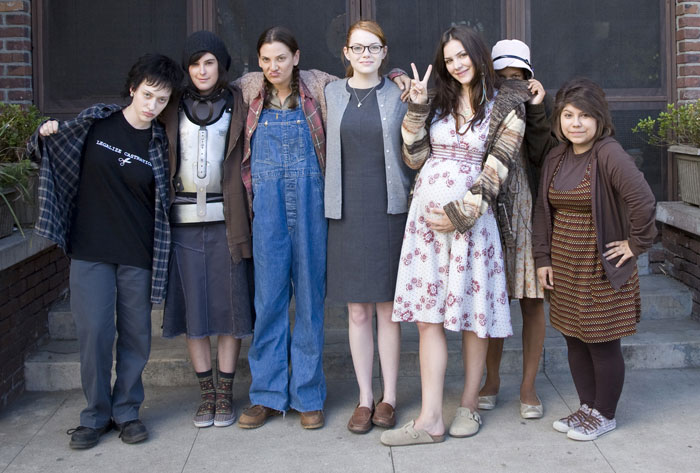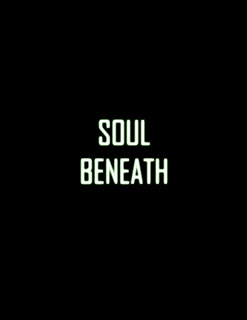So, after many weeks of filming and hours upon hours of editing, my film was finally finished and it was time to evaluate. I chose to do my evaluation as a video piece as I wanted it to be as creative and interesting as possibly and I'm hoping that my evaluation is just that.
After watching through my evaluation I realised that I have missed out a lot that I wanted to say about the various questions and now being minus a camera, I have written out my extra notes for my answers:
QUESTION 1:
As well as using conventional media products to make my film opening, I think that I have both conformed and challenged the forms and conventions of real media productions.
With my titling, I think that it is unique. I’ve not come across anything like it in my movie watching experience and so I am happy that I have managed to come up with an idea that is quite original and eye-catching. I think that my titling worked well with my film opening and built suspense along with questions in the mind of the viewer. Also, I believe that, with my titling, I have managed to create something that looks quite professional despite the fact that I had an extremely small budget to produce this film opening compared to the professionals.
The low budget meant that I couldn’t afford a lot of the equipment that the professional film makers use to produce their films. Instead of large cranes with lights on and a light and sound team, I had house lamps to create the atmosphere of the opening being at night without having it completely black and, thanks to my brother, I had a studio microphone to record the narration on so the sound was crisp and clear. However, I think that I could have made my film opening look better by shooting in the day and darkening the footage later using After Effects as the end result would have had a lot more detail in the image, but I suppose by not having this level of detail, I have challenged the conventions of real media productions.
The setting, I think conforms to real media products. My film opening is set in the present day and starts by a girl being unhappy with the world in which she lives which is your standard, stereotypical suburbia. This is similar to a few other sci-fi films such as ‘Super 8’. While the story is set in 1979, the protagonist, Joe, isn’t happy with the course of his life and is bored being stuck in suburbia. The setting of suburbia is common not just in sci-fi films but also in action, rom-coms and pretty much any other genre you can think of. So, in this way, I have conformed to the conventions of the media.
QUESTION 1/2:
Lia’s costume reflects her personality and, in a way, conforms to the look of being an outcast which is seen in many different genres in many ages of film. Take The Joker from ‘The Dark Knight’ for example. The audience are made aware that he is more of an outcast type of character by the costume and make-up that he wears. He doesn’t have to say anything for the audience to be aware that he is different and Lia is the same. I dressed her so that she was wearing mis-matching colours, her style of clothing was an array of garments from different eras and her make-up showed her creativity and the fact that it wasn’t hidden showed that she didn’t care what people thought of her. The idea of her 'different' costume is similar to those of the characters of the Zeta house girls in 'The House Bunny'. They are all portrayed as geeks and outcasts through their clothing and, like with Lia and The Joker, the audience don't have to see the characters behaving to know that they are different from the norm of their society. So again, I have conformed to the media by conforming to the idea of an outcast’s costume.
QUESTION 4:
An idea of the kind of person who would watch my movie:
Lia’s costume reflects her personality and, in a way, conforms to the look of being an outcast which is seen in many different genres in many ages of film. Take The Joker from ‘The Dark Knight’ for example. The audience are made aware that he is more of an outcast type of character by the costume and make-up that he wears. He doesn’t have to say anything for the audience to be aware that he is different and Lia is the same. I dressed her so that she was wearing mis-matching colours, her style of clothing was an array of garments from different eras and her make-up showed her creativity and the fact that it wasn’t hidden showed that she didn’t care what people thought of her. The idea of her 'different' costume is similar to those of the characters of the Zeta house girls in 'The House Bunny'. They are all portrayed as geeks and outcasts through their clothing and, like with Lia and The Joker, the audience don't have to see the characters behaving to know that they are different from the norm of their society. So again, I have conformed to the media by conforming to the idea of an outcast’s costume.
QUESTION 4:
An idea of the kind of person who would watch my movie:
 |
| An idea of Dylan |
Dylan, 25, is a graduate music student from the University of East Anglia. He now works full time as a shop assistant in a music shop in Anglia Square in Norwich and this job is enough to pay his share of the rent of his flat, food and other necessities and still have a little left over. He lives in a flat in Norwich with his girlfriend Sarah who is training to become a primary school teacher. They met at University and have now been together for four years. Dylan goes to the cinema twice a month, once with his mates and once with Sarah. Him and his mates go to Cinema City more than Odeon as they like to watch more independent films and are not concerned about whether a film is confined to a genre or not. With Sarah, Dylan will usually go to Odeon or Vue as Sarah is a far more mainstream fan though he will sometimes take her to see something less mainstream.
Also, because I thought that my film would be watched predominantly by teenage boys, I asked more teenage boys than anyone else when it came to doing my audience research as I wanted to find out what they like in a film and see if I could cater to their tastes. See my audience research here:
QUESTION 5:
As well as advertising my film opening on the internet after i made it, when I was making the film, I had to think about how it would attract my main audience of teenage boys. From my research (to watch, click above link) I had learnt about how they don't like too much to be given away so I tried my make my film opening intriguing without giving too much away. I think I have succeeded in this by having clues in the opening about what the rest of the film will hold. The flashing lights and the letter about Lia leaving home will hopefully evoke questions in the audience's mind about where she is going. The dramatic and war-like title music will hopefully make the audience think that something poignant will happen later on in the movie. Also, I'm hoping that the titles are a foreshadowing of the action that would occur later on in the film, had I been making the whole film. Another point came up in my audience research that films that make you think are good because they give you a sense of achievement so i incorporated that with the fact that my audience don't like to be told too much about the film opening by trying to evoke lots of questions in the audience about Lia. In the opening, the audience are not fully introduced to her character or the kind of life she leads, all they know is that she somehow doesn't fit in and that she's leaving 'for a better place'. Hopefully I have been successful in my endeavours.



























